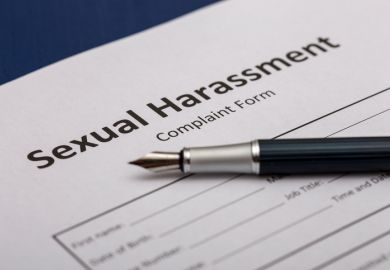About 13 per cent of all students at major US research universities have experienced at least one incident of sexual assault since their enrolment, a nationwide survey has found.
The survey by the Association of American Universities, covering 33 of its member universities, found the rate was at 20 per cent for female victims and 5 per cent among males.
The AAU survey – incorporating responses from more than 108,000 undergraduate students and nearly 74,000 graduate and professional respondents – found victimisation rates had increased from an initial survey in 2015, although with much of the variation due to changes in participating campuses.
The AAU, representing 60 top public and private research universities in the US and two in Canada, said it began the surveys to help drive improvements at those institutions and sees much work still remaining.
“The disturbing news from this year’s survey is that sexual assault and misconduct remain far too prevalent among students at all levels of study,” said Mary Sue Coleman, the AAU’s president.
The AAU found the rate of non-consensual sexual contact by either physical force or an inability to consent increased 3 percentage points among undergraduate women between the 2015 and 2019 surveys. The rates rose 2.4 percentage points among graduate and professional women, and 1.4 percentage points among undergraduate men.
Among the 21 institutions that participated in both the 2015 and 2019 surveys, however, rates were largely unchanged. Two exceptions, which the AAU did not name, saw increases of 50 per cent and 75 per cent in their assault rates.
Women reported fewer than 30 per cent of the assault cases to an authority. Men did so in fewer than 18 per cent of cases. Leading reasons for women not reporting included the victim feeling she could handle the matter herself, the victim doubting the seriousness of the incident, and the victim feeling ashamed.
Yet, more than 65 per cent of students said university officials would likely take seriously such a report. Less than 40 per cent of students, however, felt they were highly knowledgeable about the definition of sexual assault, where to get help or how to report it.
More than 40 per cent of students in the survey reported experiencing at least one incident of any type of sexual harassment. Nearly 19 per cent said that behaviour interfered in some way with their academic or professional work.
For graduate and professional students, nearly a quarter of the harassment came from a faculty member or instructor, compared to a rate of 5.5 per cent among undergraduate women. Overall, the survey found that the “vast majority” of offenders were fellow students, commonly in some type of residential environment.
Register to continue
Why register?
- Registration is free and only takes a moment
- Once registered, you can read 3 articles a month
- Sign up for our newsletter
Subscribe
Or subscribe for unlimited access to:
- Unlimited access to news, views, insights & reviews
- Digital editions
- Digital access to THE’s university and college rankings analysis
Already registered or a current subscriber?







